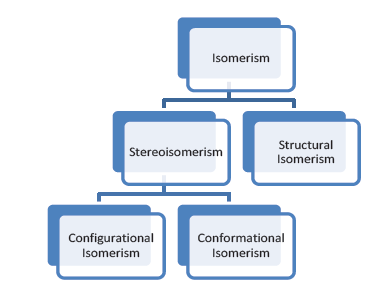Understandings:
- Stereoisomers are subdivided into two classes—conformational isomers, which interconvert by rotation about a σ bond and configurational isomers that interconvert only by breaking and reforming a bond.

- Configurational isomers are further subdivided into cis-trans and E/Z isomers and optical isomers.

- Cis-trans isomers can occur in alkenes or cycloalkanes (or heteroanalogues) and differ in the positions of atoms (or groups) relative to a reference plane. According to IUPAC, E/Z isomers refer to alkenes of the form R1R2C=CR3R4 (R1 ≠ R2, R3 ≠ R4) where neither R1 nor R2 need be different from R3 or R4.
- A chiral carbon is a carbon joined to four different atoms or groups.
- An optically active compound can rotate the plane of polarized light as it passes through a solution of the compound. Optical isomers are enantiomers. Enantiomers are non-superimposeable mirror images of each other. Diastereomers are not mirror images of each other.
- A racemic mixture (or racemate) is a mixture of two enantiomers in equal amounts and is optically inactive.
|
International-mindedness:
- Have drugs and medicines in some countries been sold and administered as racemates instead of as the desired enantiomer with the associated therapeutic activity? Can you think of any drugs or medicines which may serve as good case studies for this?
Theory of knowledge:
- The existence of optical isomers provide indirect evidence for a tetrahedrally bonded carbon atom. Which ways of knowing allow us to connect indirect evidence to our theories?
- Stereoisomerism can be investigated by physical and computer models. What is the role of such models in other areas of knowledge?
- One of the challenges for the scientist and the artist is to represent the three- dimensional world in two dimensions. What are the similarities and differences in the two approaches? What is the role of the different ways of knowing in the two approaches?
Utilization:
- Many of the drugs derived from natural sources are chiral and include nicotine, dopamine, thyroxine and naproxen.
- The role of stereochemistry in vision science and food science.
- In many perfumes, stereochemistry often can be deemed more important than chemical composition.
Syllabus and cross-curricular links:
Topics 10.1 and 10.2—organic chemistry
Option B.4—carbohydrates
Option B.10—stereochemistry in biomolecules
Option D.7—importance of chirality and drug action |



